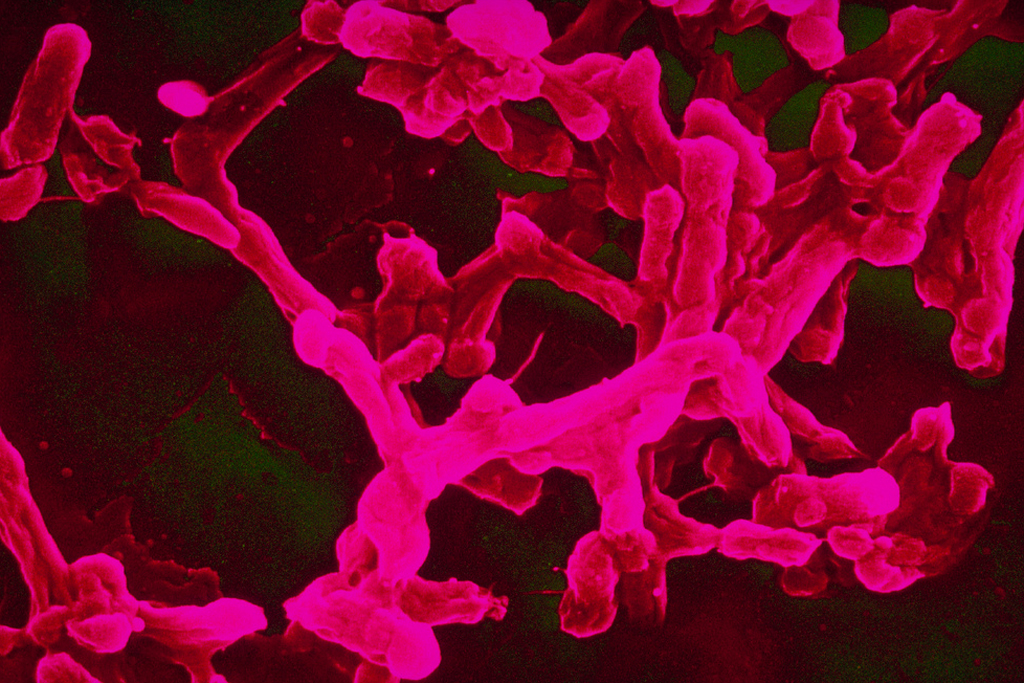Key Points in a Theology of Disease
WCIU Journal: Health and Disease Topic
May 4, 2017
by Beth Snodderly
1. The origin of disorder (and disease) in this world
The opening verses of Genesis emphasize that there was disorder in this world before the account of Creation has even begun. The Creation account in Genesis 1 shows God’s intention is to reverse disorder and chaos (called tohu wabohu in Genesis 1:2). If we recognize that disease consists of disorder and chaos at the cellular level, this can lead to considering the pattern found in Genesis 1 as a candidate for the beginnings of a theology of disease:
In the beginning God created the heavens and the earth.
As for the earth,
it was destroyed and desolate (tohu wabohu),
with darkness (hosek) on the face of the deep (tehom),
but the Spirit of God (ruach elohim) stirring (merachepet) over the face of the waters (Genesis 1:1, 2; original translation from the Hebrew)Then God said, “Let there be light,” and there was light.
God saw that the light was good (tob), and he separated the light from the darkness. (Genesis 1:3, 4, NIV)
Something opposite to God’s intentions exists and is described in Genesis 1:2. The author of Genesis shows how God goes about correcting these conditions that are contrary to his will, moving from tohu wabohu (disorder) to tob (“good”). These verses show that God has evil under control and patiently counter-acts it with acts of creativity, including the creation of humans to join him in fighting the forces of evil that cause tohu wabohu. (See Genesis 1:28: “subdue the earth.”)
2. Does God send disease or does God want to do away with it? How do we reconcile the differing Old and New Testament viewpoints?
The writers of the Old Testament thought God punished people for sinning by sending disease and plagues. Genesis 12:17 gives one example among many: “The Lord inflicted serious diseases on Pharaoh and his household because of Abram’s wife Sarai.” In the wilderness, the people sinned, and “the Lord sent venomous snakes among them” (Numbers 21:6). Jehorum, King of Judah, “did evil in the eyes of the Lord. … and after all this the Lord smote him in his bowels with an incurable disease (choliy)” (2 Chronicles 21:6, 18).
On the other hand, many Old Testament passages show that God gives shalom (which includes good health) to his people when they obey him. “‘If you follow my decrees and are careful to obey my commands, … “‘I will grant peace (shalom) in the land, …. I will remove wild beasts from the land’” (Leviticus 26:3-6). A 21st century understanding of “wild beasts” might include microbes that cause suffering and disease.
Ultimately the prophet Isaiah was able to understand that God himself, through his chosen Servant, would bear our griefs, sicknesses, and diseases. “Surely he hath borne our griefs” [choliy, usually translated, sickness or disease] and carried our sorrows” (Isaiah 53:4). Jesus’ life demonstrated the fulfillment of God’s intentions: “Many who were demon-possessed were brought to him, and he drove out the spirits with a word and healed all the sick. This was to fulfill what was spoken through the prophet Isaiah: ‘He took our infirmities and bore our diseases’” (Matthew 8:16, 17).
In the New Testament, deliverance from disease is a sign of the “good news” of the Kingdom of God. “Jesus went about all Galilee, teaching in their synagogues, and preaching the gospel of the kingdom, and healing all manner of sickness and all manner of disease among the people” (Matthew 4:23). Luke reports that as the crowds followed Jesus, He “welcomed them and spoke to them about the kingdom of God, and healed those who needed healing” (Luke 9:11). THIS is what God’s will and loving character looks like.
The seeming contradictions between the Old and New Testament views are resolved when we take into account that Jesus is the full revelation of God’s character and will. “The Son is the radiance of God’s glory and the exact representation of his being” (Hebrews 1:3). As Pastor-theologian Greg Boyd emphasizes in his recent 2-volume work, Crucifixion of the Warrior God, since the writers of the Old Testament were not able to see this full revelation due to their cultural limitations, God accommodated himself to their limited understanding. Boyd summarizes what the Old Testament writers did not understand about the origins of disease and violent behavior when they attributed these to God: “The cross … reveals that God judges sin by withdrawing his protective presence while wisely allowing one form of evil to punish another, eventually causing evil to self-destruct” (Boyd 2017, 1:224).
The Old Testament writers attributed disease caused by microbiological evils (such as leprosy or plague) to God’s punishment for sin. This Old Testament view sounds a lot like some contemporary Christian view of disease, and for the same reason: “there is no Satan in the picture.” Both views put the blame on the person who is suffering or on God because they do not recognize that the devil and demons are the source of illness.
3. Devil and demons’ role in disease
“Are Disease Pathogens the Work of God or Satan?” the late missiologist Ralph Winter asked (Winter 2008, 179). The biblical author of Numbers attributed deadly snake bites to God’ punishment, but Jesus immediately re-framed sickness and disease as being from the devil. At the outset and throughout his public ministry, “people brought to him all who were ill with various diseases, those suffering severe pain, the demon-possessed, those having seizures, and the paralyzed; and he healed them” (Matthew 4:24). Jesus specifically described a woman who had been crippled for 18 years as having been under the bondage of Satan (Luke 13:16). He said in John 3:14-15 that even as Moses lifted up the serpent (demonstrating that one of the devil’s works of death had been defeated), so the Son of Man would be lifted up, defeating the devil’s work, resulting in life.
Peter summarized in Acts 10:38 that Jesus “went around doing good and healing all who were under the power of the devil, because God was with him.” Jesus passed this practice on to his disciples. When He sent out the Twelve he told them, “As you go, proclaim this message: ‘The kingdom of heaven has come near.’ Heal the sick, raise the dead, cleanse those who have leprosy, drive out demons. Freely you have received; freely give” (Matthew 10:7, 8). The book of Acts gives a number of examples of Jesus’ followers healing the sick and loosing people from Satan’s power (e.g., Acts 3:1-10; 5:12-16; 8:5-8; 9:36-42).
4. The mandate to care for creation includes fighting germs and disease as part of taking creation back for God’s glory
Disease and infirmities are part of the devil’s bondage of people and creation. Jesus came to “destroy the works of the devil” (1 John 3:8). He healed the diseases people knew about at that time: leprosy, crippled people, demon possessed people, a woman with an issue of blood, blindness, etc. Now that we know about viruses and “germs” (as Ralph Winter liked to say), God’s people can join God in loosing many times as many people from the power of Satan as Jesus did. (“Greater works than these shall you do,” Jesus said in John 14:12). In Isaiah’s description of a future where shalom is pictured as salvation from feared animals (wolf, lion, snake), the prophet was not able to include bacteria and viruses in his list, since micro-organisms were unknown then. But knowing now that many diseases are caused by bacteria and viruses, it seems reasonable to include the “taming” of these types of “animal” life in an application of the understanding of shalom in the 21st century.
Creation itself is groaning, even at the microbial level, waiting to be delivered by the free choices of the body of Christ, through whom God has chosen to work in this world (Romans 8:18-19). Lessie Newbigin said, “The one who wishes to love and serve the Lord will want to be where he is. And where he is is on that frontier which runs between the kingdom of God and the usurped power of the evil one” (Newbigin 1989, 127). French theologian Jean-Claude Larchet summarized a similar Eastern Orthodox position:
Rather than accept and give in to illness in a fatalistic way, the human person, benefiting from the victory obtained by the God-man over sin and the forces of evil, should do everything within his power to combat it. This struggle against illness indirectly constitutes a part of the larger struggle one is called to assume against the powers of evil (Larchet 2002, 81).
For Winter, “everything within his power” included calling the body of Christ to fight germs, trying to eradicate diseases at their origins where possible. He taught that “unless Satan is in the picture and we are known to be fighting his deadly works, we are allowing God’s glory to be marred and torn down” (Winter 2005). Boyd explains that “while Satan has in principle been defeated by Christ, … applying this victory to the rest of the world is the primary business of the Church, the body of Christ” (emphasis added) (Boyd 2001, 38). With Winter, Greg Boyd recognizes that “we are doing spiritual warfare when we fight disease” (Boyd 2010, 292).
References
Boyd, Gregory A. 2001. Satan and the Problem of Evil: Constructing a Trinitarian Warfare Theodicy. Downers Grove: IVP Academic.
______. 2010. A War-Torn Creation. In Evangelical and Frontier Mission Perspectives on the Global Progress of the Gospel. Edinburgh: Regnum, 2010), 292.
______. 2017. Crucifixion of the Warrior God, 2 Vol. Minneapolis: Fortress.
Larchet, Jean-Claude. 2002. The Theology of Illness. Crestwood, NY: St. Vladimir’s Seminary Press.
Newbigin, Lesslie. 1989. The Gospel in a Pluralist Society. Grand Rapids: Eerdmans.
Ralph D. Winter, “Summary of Ralph D. Winter's Warfare Missiology,” Roberta Winter Institute, 2005, accessed May 4, 2017, http://www.robertawinterinstitute.org/blog/2014/6/18/summary-of-ralph-d-winters-warfare-missiology.
______. 2008. Roberta Winter Institute. In Frontiers in Mission: Surmounting Barriers to the Missio Dei, 4th ed. Pasadena: WCIU Press.
Beth Snodderly is a past president of William Carey International University and is the editor for both the William Carey International Development Journal and the Ralph D. Winter Research Center. She holds the degree of Doctor of Literature and Philosophy in biblical studies from the University of South Africa.


